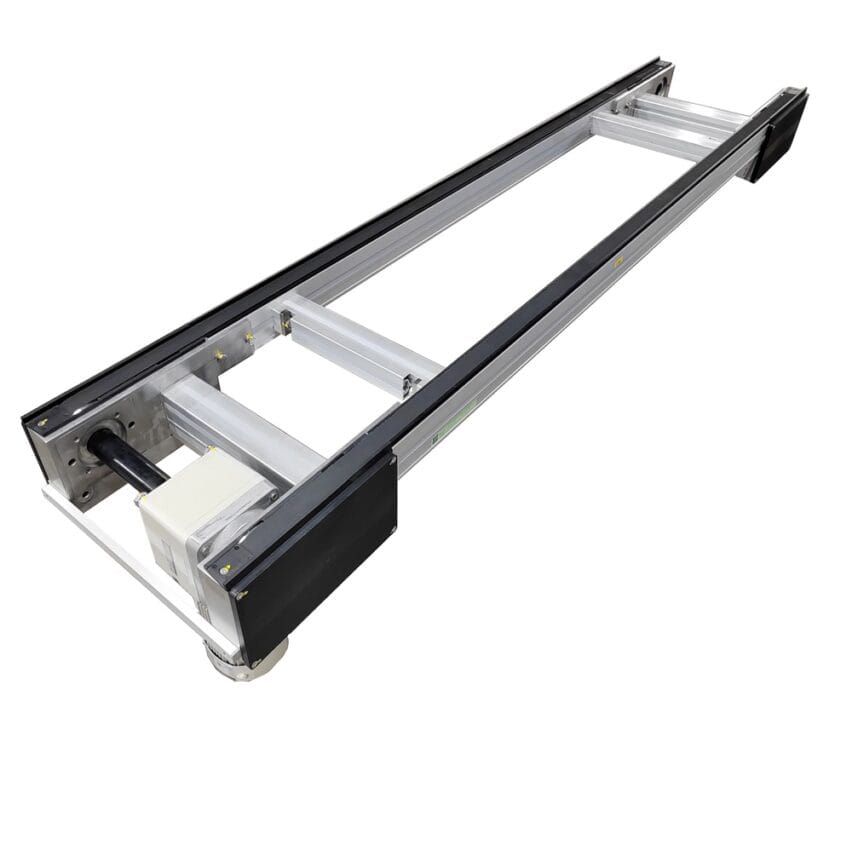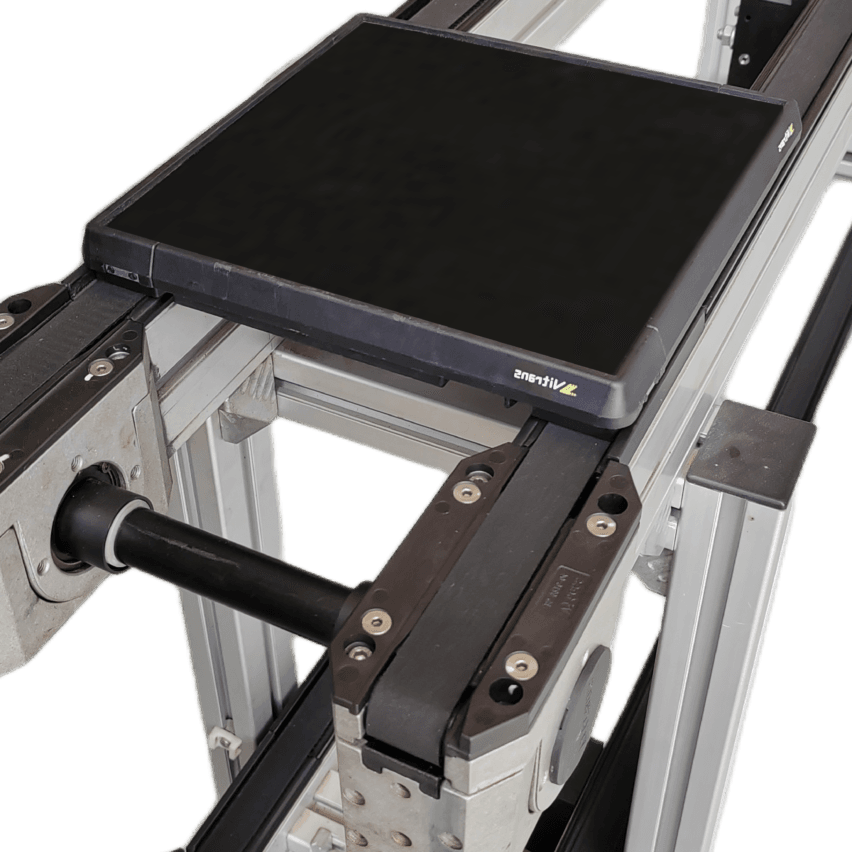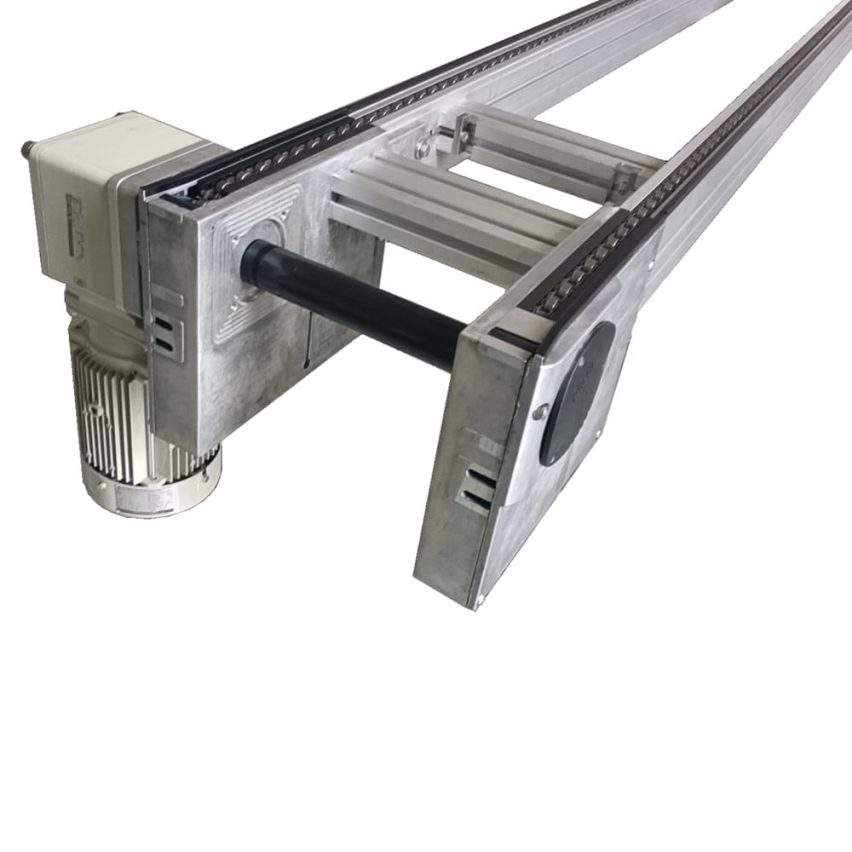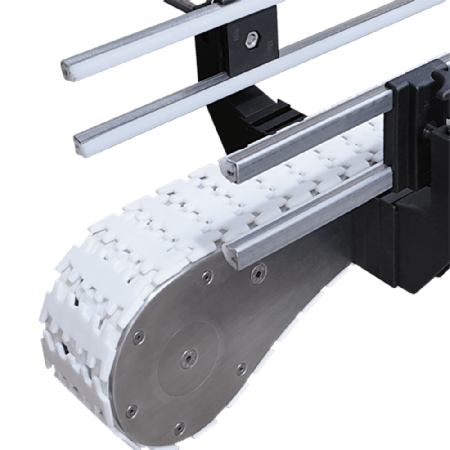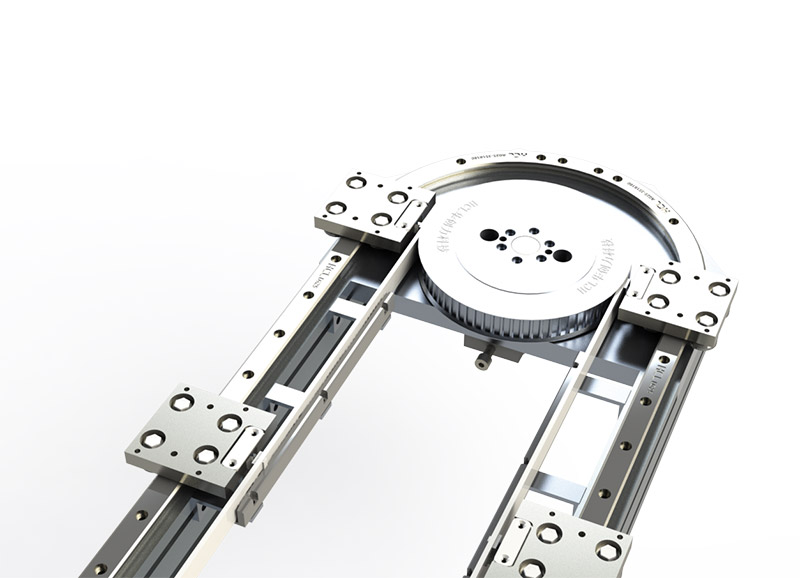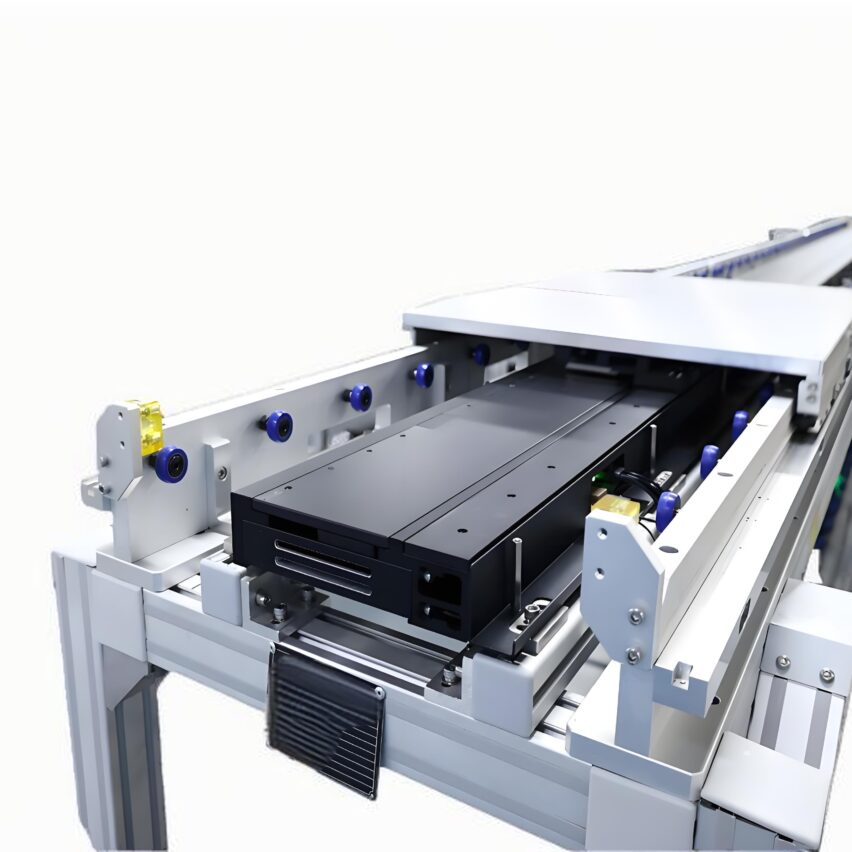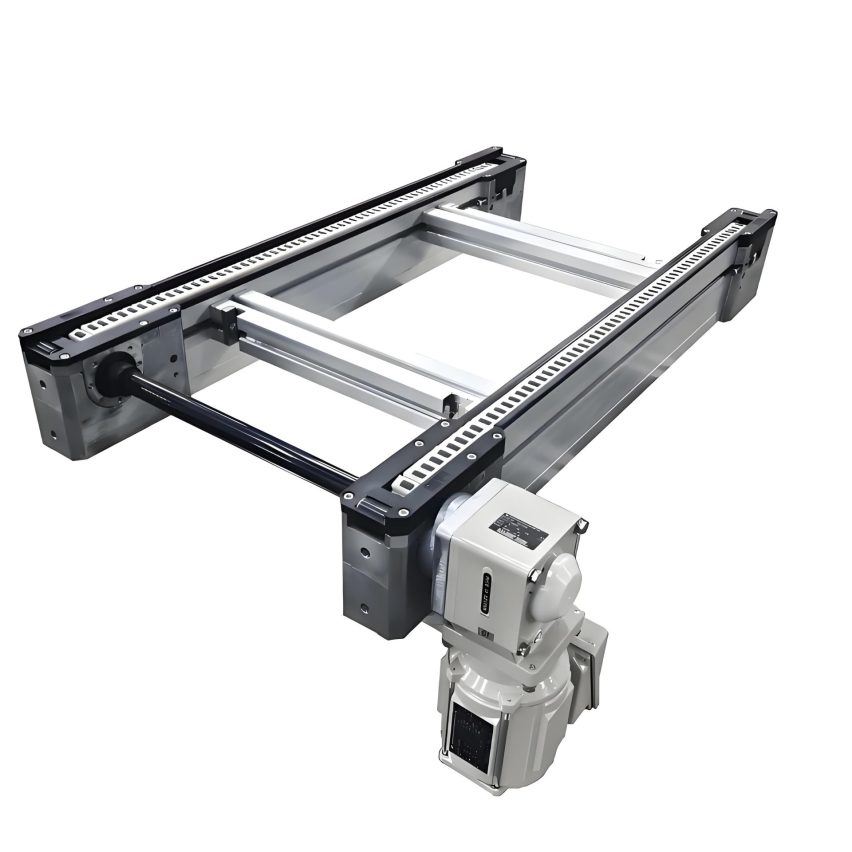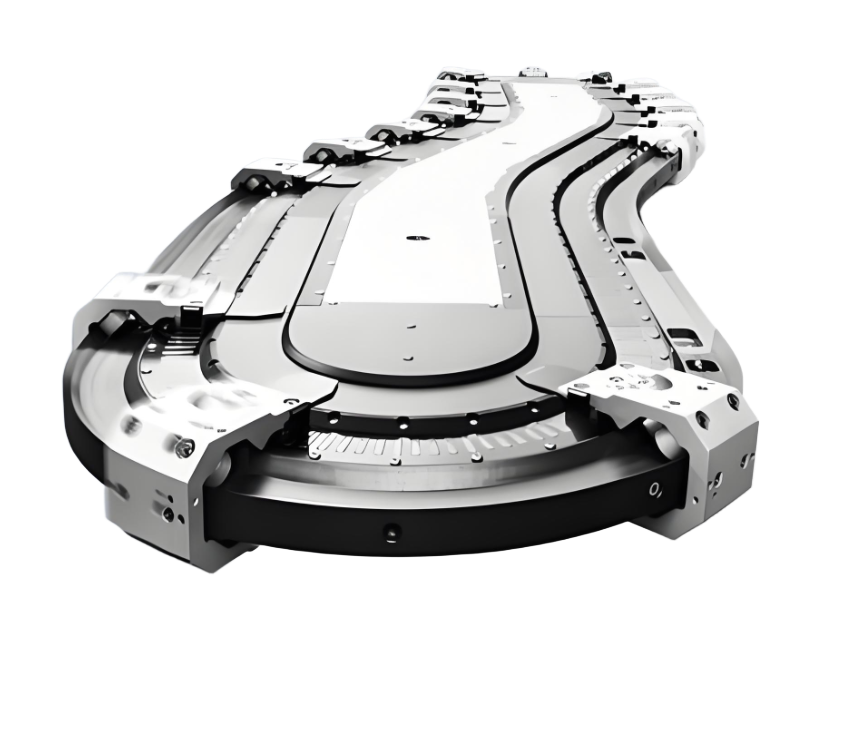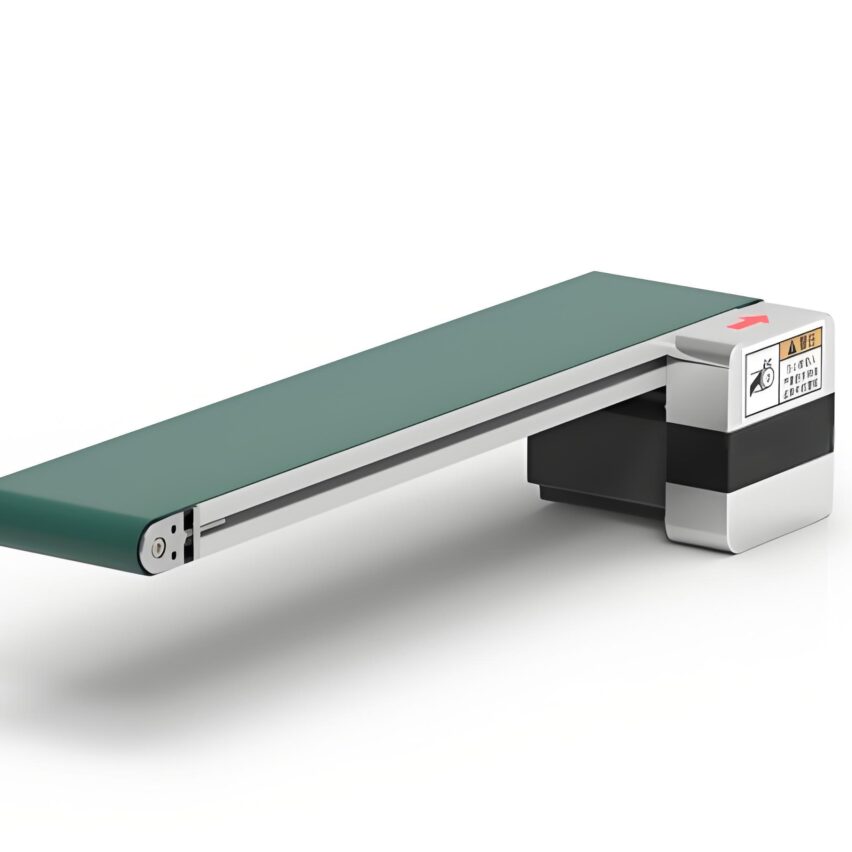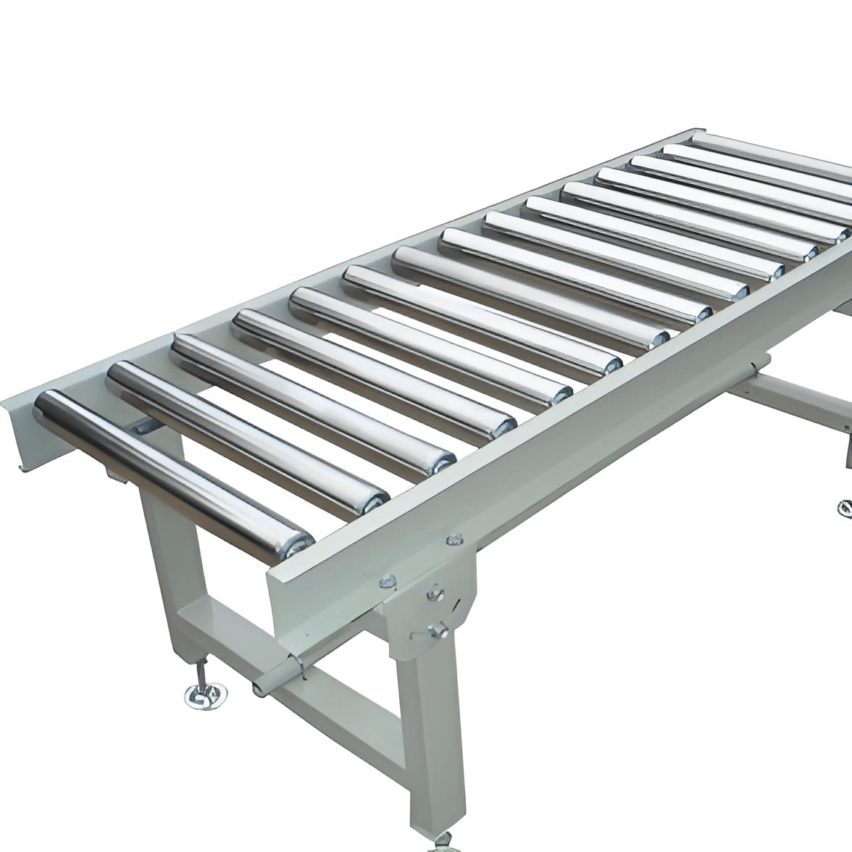In the assembly workshop of a modern electronics factory, a mobile phone motherboard slides on the assembly line at a speed of 10 cm per second, accurately docked at the detection station, with an error of no more than half a hair's breadth in diameter - the core technology behind the drive is precisely theDouble speed chain automatic assembly line. It has become a key infrastructure for the manufacturing industry to improve productivity through its unique differential speed design, which allows the work plates to be transported efficiently at 2-3 times the speed of the chain.
I. The "black technology" principle of the speed multiplier chain: the physical wisdom of the differential speed design
The core mystery of the multiplier chain isDifference in diameter between roller and roller. When the chain runs at the base speed (V₁), the work plate generates additional linear velocity (V₂) due to the roller rotation, forming a compound speed increase effect. According to the physical equation:
Vgather
= V₁ × (1 + D/d)
(D is roller diameter, d is roller diameter)
Two types of typical configurations exist in practical applications:
- 2.5x speed chain: for assembly stations, balancing precision and efficiency
- 3x Chain: For logistics sorting scenarios where speed is a priority
I have observed an air-conditioning compressor assembly line: at a chain speed of 2 metres per minute, the actual speed of the work plate was 6 metres per minute. This kind ofvelocity stacking effectThis allows the production line to add 40% workstations in the same length, directly reducing the equipment footprint.
II. The four core modules of Precision Synergy
1. Double-speed chain system
- Material Evolution: From early steel chain to nylon composite chain, weight reduction 50%
- Speciality AdaptationFood grade PU chain for food industry, corrosion resistant and meets hygienic standards.
- Lifespan breakthrough: New surface treatment technology enables chain life to exceed 100,000 hours
2. Intelligent control systems
Modern PLC controllers for multiplier chains have evolved three core capabilities:
- Dynamic speed controlReal-time monitoring of beats by means of photoelectric sensors, automatic compensation of speed deviations
- millimetre positioning: ±0.05mm stopping accuracy with blocker
- fault prediction: Current monitoring module provides 3-hour advance warning of chain overload risk
3. Circulation mechanism design
Upper and lower return plate systemThrough the double-layer track design, the empty pallets are returned to the starting point of the line through the plate return machine, and the utilisation rate of the tooling boards is increased by 90%. A case study of a new energy battery factory shows that the design has shortened the production line changeover time from 30 minutes to 12 minutes.
4. Environmental adaptation technologies
Stability in extreme environments comes from three innovations:
- magnetorheological damper: Absorb equipment vibration to avoid damage to precision parts
- Electrophoretic treatment guide: Resistance to deformation in high-temperature paint shops in automobile factories
- -20℃~120℃ temperature control: Adaptation to Arctic research equipment production line needs
Third, the revolution of differentiation in industry applications
Automotive Manufacturing
On the engine assembly line, the doubling chain carries a 240kg cylinder block moving at high speed through theElectromagnetic locking deviceCounteracting the vibration of robotic arm operation. After the introduction of a German car manufacturer, the crankshaft alignment accuracy was improved from ±0.3mm to ±0.1mm, and assembly errors were zeroed out.
3C Electronics Industry
Mobile phone motherboard inspection line adoptsAnti-static tray + graphene countertopThe combination of the two devices eliminates the risk of electrostatic breakdown. A factory in Shenzhen practice shows that the combination of the motherboard inspection efficiency by 3 times, annual savings of more than 2 million yuan in labour costs.
Medical Device Manufacturing
The implant tray has a titanium frame and is resistant to autoclaving at 132°C. More critical is the integration ofRFID chipThe number of times each tray is sterilised is tracked in real time, ensuring aseptic reliability over a 5,000-times lifecycle.
IV. Three Frontier Directions for Technological Breakthroughs
1. Energy self-consistency systems
The newly developed photovoltaic coated pallet, together with the kinetic energy recovery device, reduces the energy consumption of the conveyor line by 501TP3 T. Experimental data shows that 2.3kWh of electricity can be recovered daily on a 10-metre long assembly line.
2. Distributed decision-making networks
Intelligent tray system deployed in a screen factory in Nanjing can autonomously choose the path to avoid bottleneck workstations. When the detection of workstation congestion, the tray automatically switches to the alternate route, so that the efficiency of the entire line to improve 33%.
3. Digital twin commissioning
The virtual commissioning technology of Speed Chain compresses the production line reorganisation time from 72 hours to 8 hours. Engineers first simulate resonance points at different speeds on a digital platform to avoid the risk of mechanism collisions during physical commissioning.
As one automation expert puts it, "The value of the multiplier chain is not only in the speed-up, but also in theReconfigured the logic of human-computer collaboration--workers from porters to value creators."
Key Questions and Answers about Multiplier Chain Assembly Lines
Q1: Why is the 3x chain not suitable for precision assembly stations?
At speeds greater than 5 m/min, the inertia of the emergency stop tends to cause micro-electronic components to shift. Experiments show that at 3 times the speed of the emergency stop, 0402 package capacitor displacement probability of 12%, while 2.5 times the speed of only 2%.
Q2: How to solve the risk of multi-layer wire body pallet collision?
adoptionDual calibration of laser ranging + weight sensingThe lifting mechanism is activated only when the pallet is detected to be completely off the track. The patented fall prevention mechanism mechanically locks the platform in case of power failure to prevent free fall.
Q3:What kind of chain is the most reasonable for food production line?
testimonialsFood grade PU plastic covered chain::
- Seamless surface structure to avoid microbiological growth
- Resistant to corrosion from acid and alkali flushing solutions
- Operating noise below 55 dB
Q4: How to protect the hot workpiece in case of sudden stoppage?
The "emergency creep mode" is activated - the faulty section moves at a low speed of 0.05 metres per second. The application of a car painting line proved that this technology avoids localised overheating and deformation of workpieces in the 180°C baking channel.
As production lines evolve towards flexible manufacturing, multiplier chain systems are morphing from mere conveyors toMobile terminals carrying manufacturing data. Each pallet records the processing history of the workpiece, and each chain transmits the health status of the equipment - these silent flowing data are the real bloodline of intelligent manufacturing.

